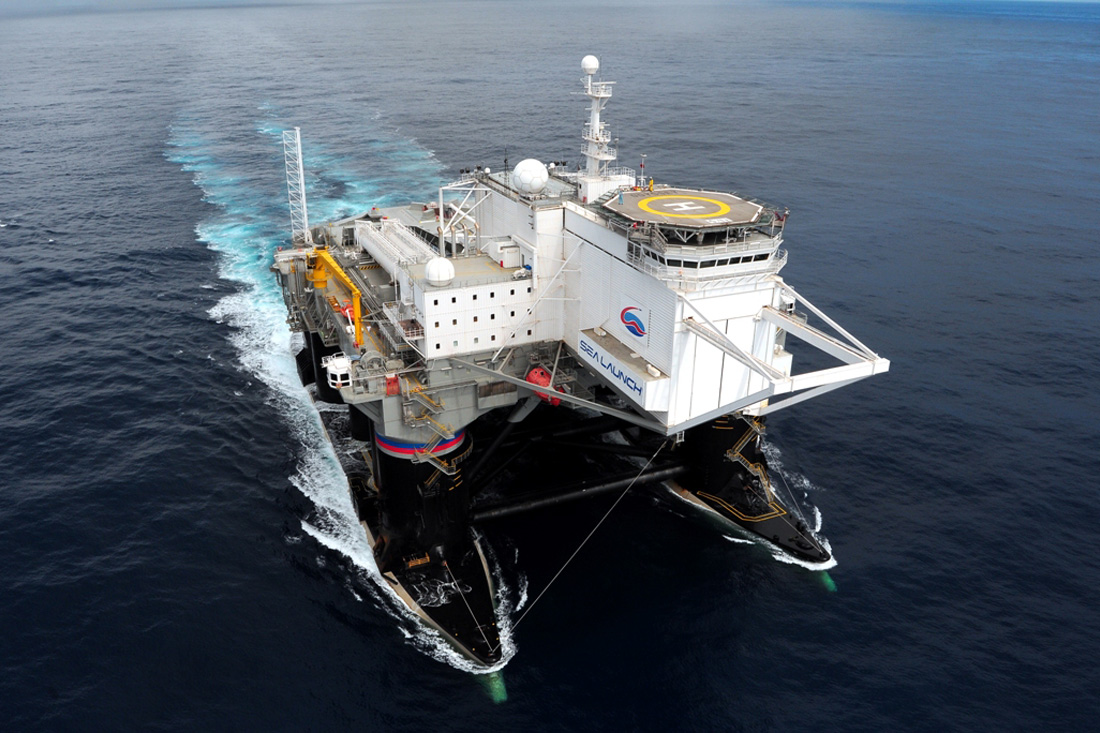
In the Far East, in the port of Slavyanka, near the decommissioned floating docks and old tugs, the Sea Launch towers over the gray five-story buildings like an alien snow-white bulk. The floating launch complex for space rockets consists of two ships Sea Launch Commander and Odyssey. They spent more than twenty years of their active life near Los Angeles, and now they have returned home.
Sea Launch can be considered the historical successor of the Energia-Buran program. Although they are not directly connected, the same specialists were engaged in the creation of the floating spaceport. The idea of launching a rocket from the most geographically suitable point on Earth - the Pacific Ocean near the equator - was liked by many, and the Russian RSC Energia (25%), the Norwegian manufacturer of oil platforms Kvaerner (20%), the Ukrainian design bureau Yuzhnoye and PO Yuzhmash (15%), and American Boeing (40%).
The main source of funds was Boeing, while the rest of the participants invested more in technology and work. For the Americans, the interest was twofold: on the one hand, to load the post-Soviet missilemen with work so that they would not disperse to Iran, North Korea and other countries "friendly" to America; on the other hand, the US needed a cheaper launch vehicle for heavy geostationary satellites than the Space Shutlle.
The project started in 1995, and in 1999 the first successful launch of a demo blank took place. The launch site from the Pacific Ocean was chosen for three reasons:
- from the equator, the least energy-consuming launches of telecommunication satellites into geostationary orbit, since no need to spend fuel to change the inclination of the orbit;
- the launch from the equator is additionally assisted by the axial rotation of the Earth, adding about 150 m / s speed or about 3% fuel mass savings, compared to Baikonur;
- after the launch, the spent rocket stages fall into the ocean, and there is no need to spend money on their disposal.
The sea launch required unique technologies, because on a relatively compact scale it was necessary to place an assembly and test complex, a fueling system, a ground control station, a flight control center, and a launch pad. And all this is for a heavy-class rocket. All this at conventional spaceports occupies hundreds of hectares, and here it is distributed between the Sea Launch Commander support vessel 203 m long and the Odyssey launch platform 133 m long.But all the same, it turned out to be colossal structures, the scale of which is difficult to estimate from photographs.

Legally, there was also a complicated scheme. Sea Launch was an American company, but its shares were owned by project participants from different countries. The demands of the US State Department on the nonproliferation of technologies related to this project, despite the peace, friendship and chewing gum between the Americans and the post-Soviet countries. The head of the rocket was handled by Boeing and it was delivered to the port already fully assembled and encapsulated so that Russian and Ukrainian launch teams could not look under the fairing. The missile was used by the Ukrainian - "Zenit-3" in the "sea" modification. The upper stage is a Russian DM from RSC Energia, and the Zenith also used Russian RD-171 engines.
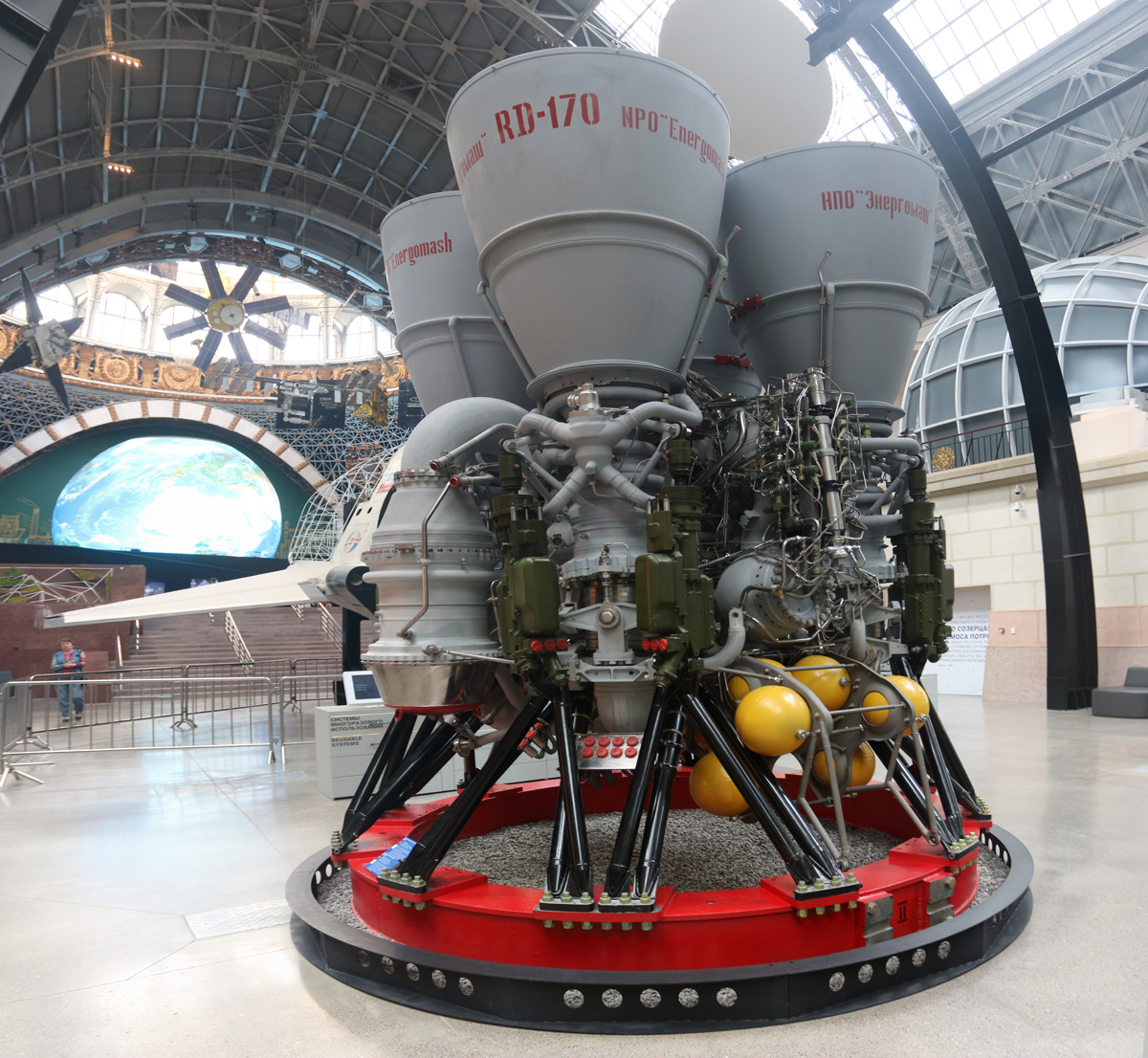
All components: an American warhead with a payload, a Russian upper stage and a Ukrainian rocket were assembled in the port of Long Beach in the holds of the Sea Launch Commander. There, the missile, ready for launch, but unfuelled, was reloaded onto the Odyssey, after which it underwent dry removal and installation of the rocket - for the last checks.

Having successfully completed the "rehearsal", the platform hid the rocket in the hangar and went to sea on its own. The command ship was catching up to the platform a few days later. At the launch point, the final preparations, refueling took place, and the Odyssey team crossed the ladder to the Commander.
Several people who were completing the prelaunch preparations were already moving by helicopter. Therefore, the sites on both ships are a production necessity.
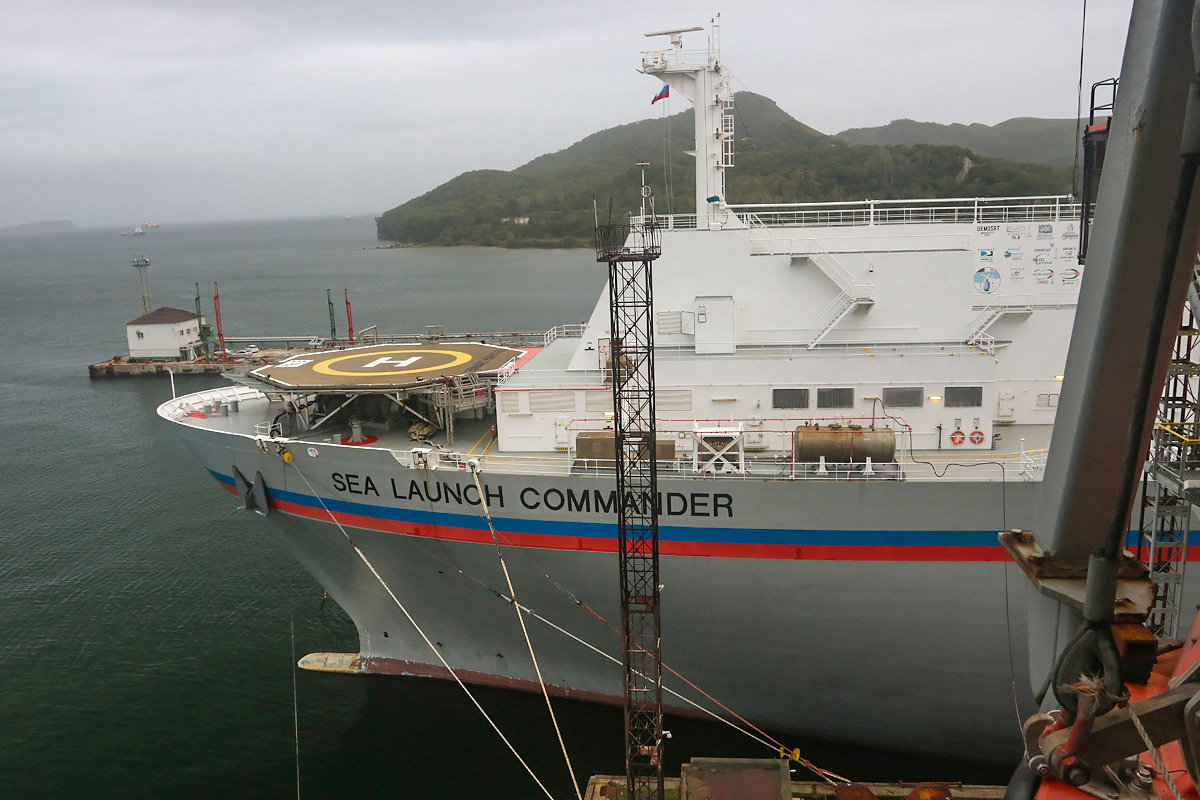
The pre-launch preparation of the rocket was carried out in automatic mode, and the launch followed.
Not all launches were successful. There were three accidents out of 36 starts, with one right on the starting table.

No one was hurt from the explosion, but the ship had to be repaired for almost a year. A year later, the company filed for bankruptcy. The $ 3 billion investment did not pay off, the US got its heavy missiles thanks to the EELV program , and demand fell. The Sea Launch business plan envisaged at least four launches a year, but this was only possible three times. The last launch took place in 2014, after which any cooperation between Russia and Ukraine in space became impossible.
After bankruptcy in 2009, the project became almost wholly owned by RSC Energia, but a debt to Boeing of $ 330 million remained. For this legal "special operation" the then head of RSC Energia, Vitaly Lopota, received a criminal case and is now under recognizance not to leave.
In 2016, the project was bought by the Russian private company S7 Space, and the debts to the Americans were compensated by Roscosmos. At the expense of the Russian state budget, NASA astronauts were provided with additional seats in the Russian Soyuz spacecraft. I have already told in more detail .
All this time, a couple of ships were based in the port of Long Beach in California. S7 Space tried to depoliticize the Russian-Ukrainian-American space project by assembling rockets in the same port, but failed to cope with it. It was not possible to restore the production of Zenits, and the US State Department did not allow launching other missiles. The situation was seriously aggravated after the death in a plane crash of co-owner of the S7 group of companies Natalia Fileva. The coronacrisis finally knocked down the Russian aerospace private trader, which hit hard on the company's core business.
The main achievement of S7 Space is the transportation of the launch platform and the command vessel to the Russian port of Slavyanka, near Vladivostok. But for this one had to pay not only in money.
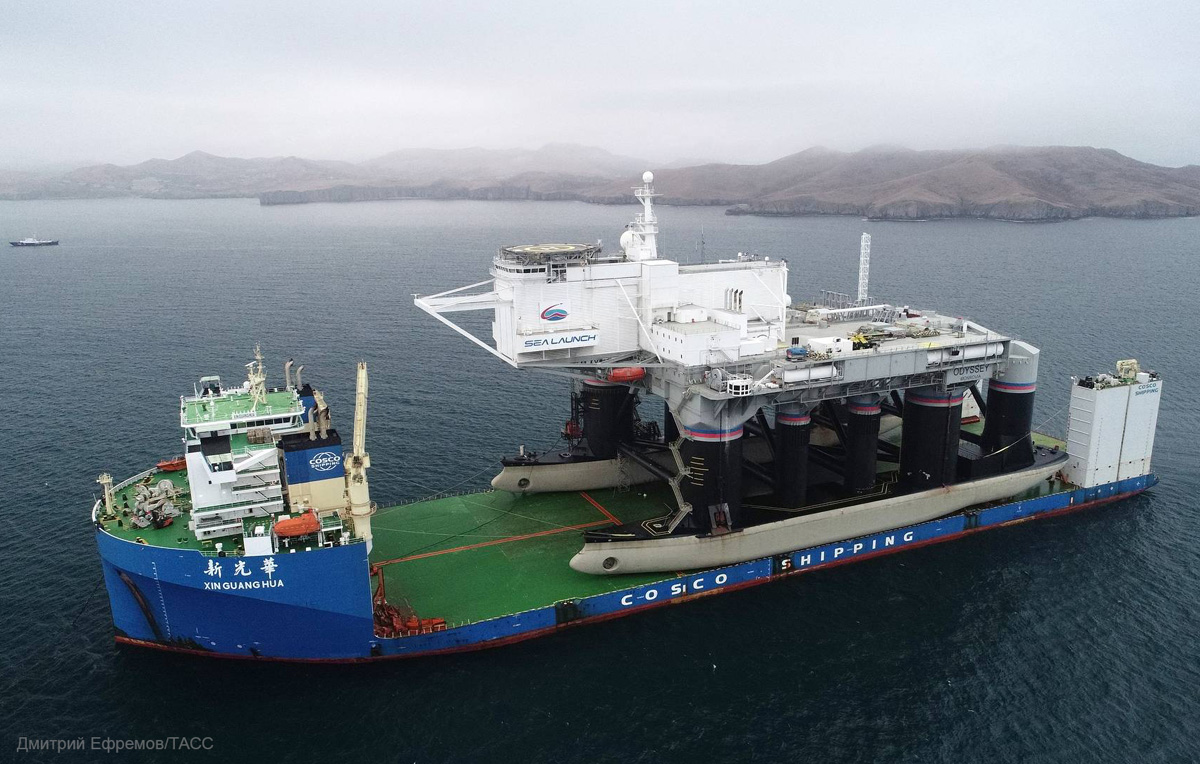
The main loss is a part of the radio-electronic and launch equipment of the floating cosmodrome. The American government demanded that American equipment remain on its home shore, and Ukrainian too. The head of Roskosmos described the losses as follows: "before its transfer to the S7 company, all the space launch control equipment was literally torn out" with meat. "
There were rumors that Rosatom was eyeing the floating cosmodrome and estimated the restoration at $ 1.2 billion. But there was no official confirmation. Later, Deputy Prime Minister Yuri Borisov voicedgovernment plans: Sea Launch is being restored for budget funds of about $ 0.5 billion, Roskosmos is creating Soyuz-5 and Soyuz-6 rockets, S7 Space continues to participate in public-private partnership. Perhaps Rosatom will also take part.
In September 2020, the Russian Sea Launch cosmodrome was first shown to journalists and bloggers.
The first thing that is striking is the scale. The ships are huge, especially for those not used to their size.
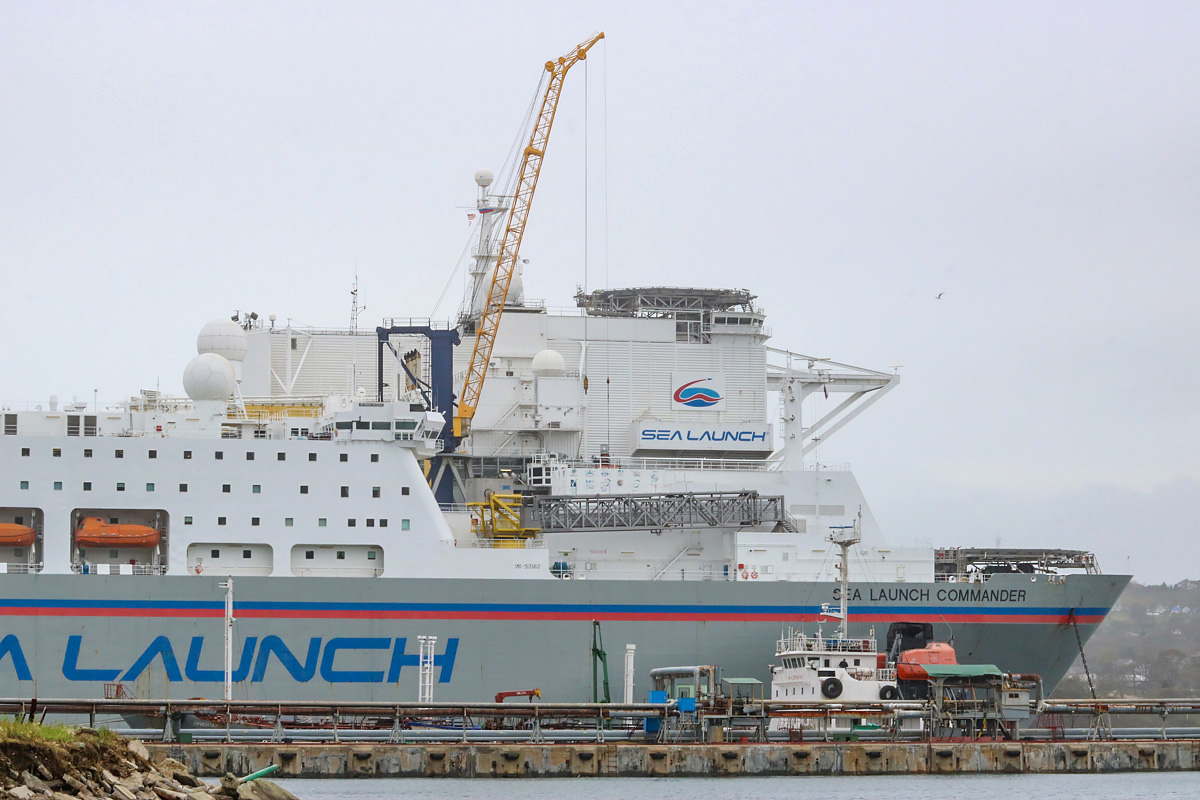
From the pier, even a wide-angle lens is not enough to capture at least one vessel.
The second is the dissonance between the well-groomed, albeit not the most modern, Sea Launch ships, and the surrounding seaside reality. Gray deserted workshops, with broken glass and eco-roofs, overgrown with young tropical forest. Floating docks abandoned to die, and ships that if they go out to sea, then only for cutting.

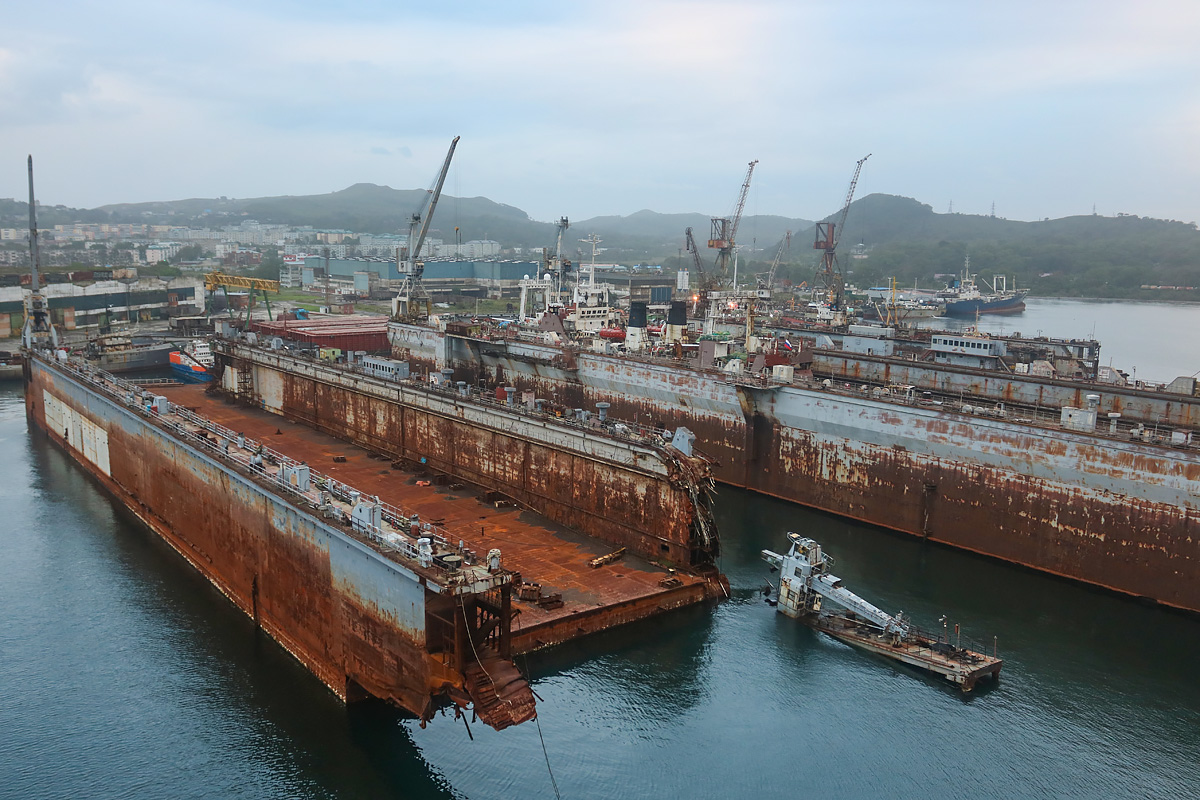
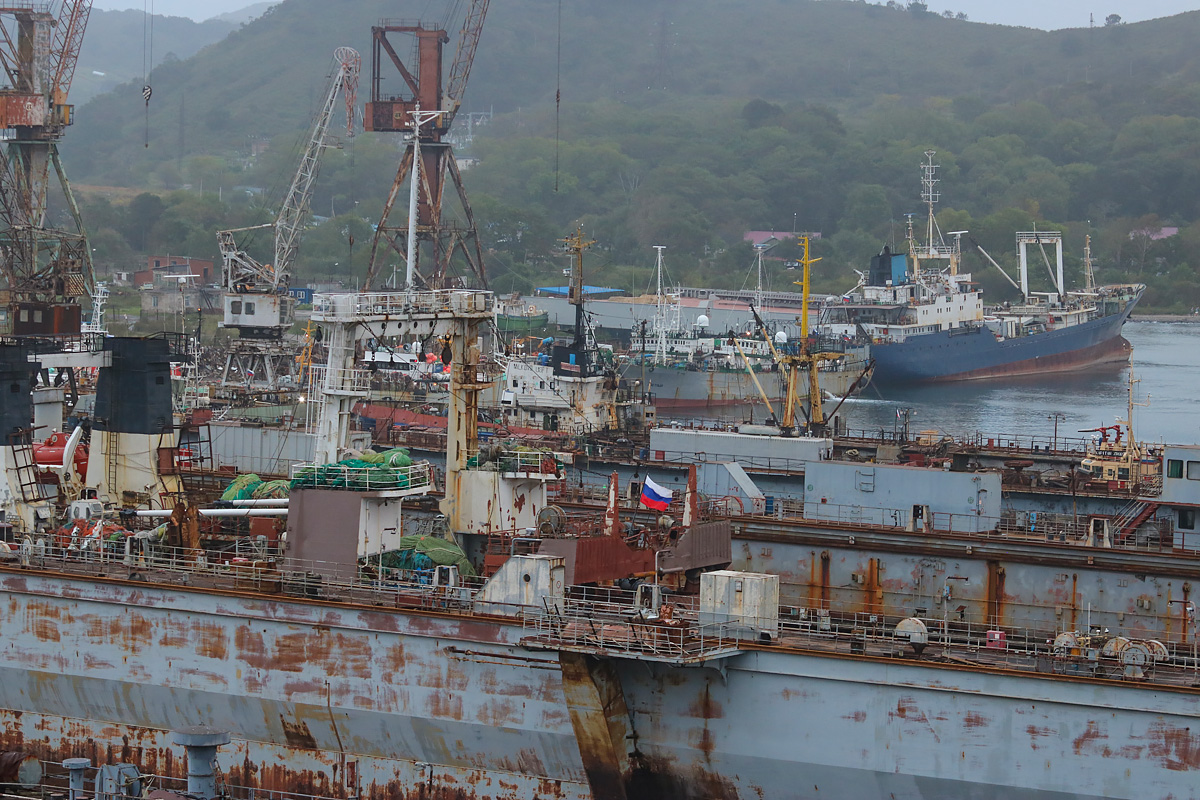
And above it all, the captain's cabin of Odyssey and the Sea Launch Commander rise. And I immediately want to save them, give them new life and work, so that they do not overgrow with the same rusty mold and hopelessness that reigns around. Therefore, representatives of the government, Roscosmos and the public are taken there - no one wants such a miracle of technology to mix with the local landscape.

Many journalists and bloggers were interested in the very places on the ships, ravaged by the "claws of American hawks." But they were not shown, so as not to spoil the impression. But they were escorted to the upper deck of the command ship.
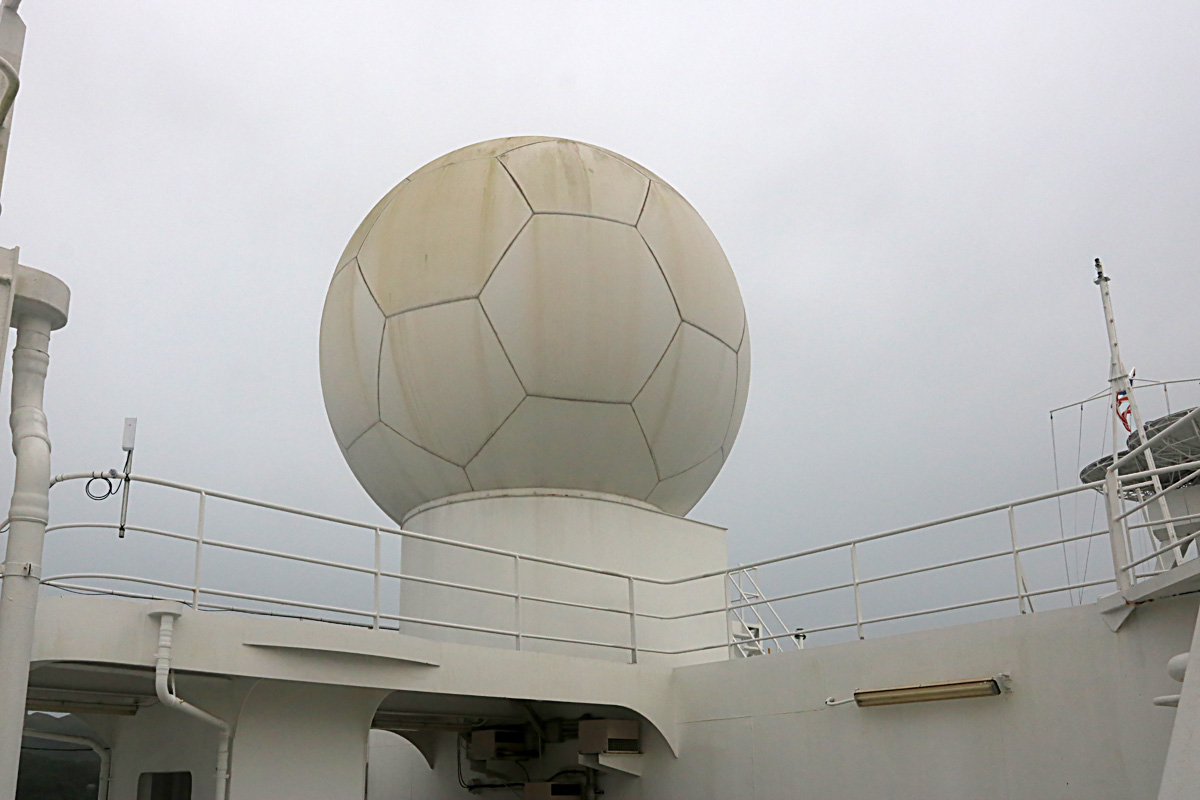
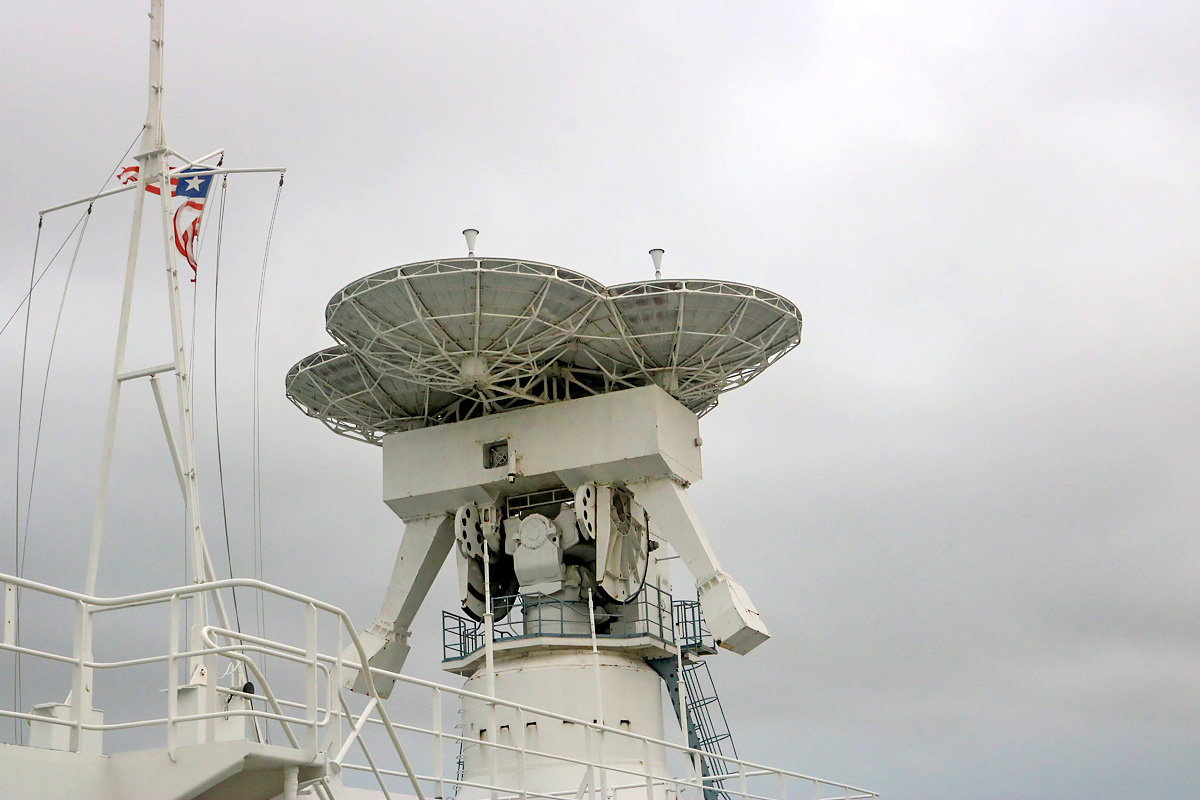
Wardroom.
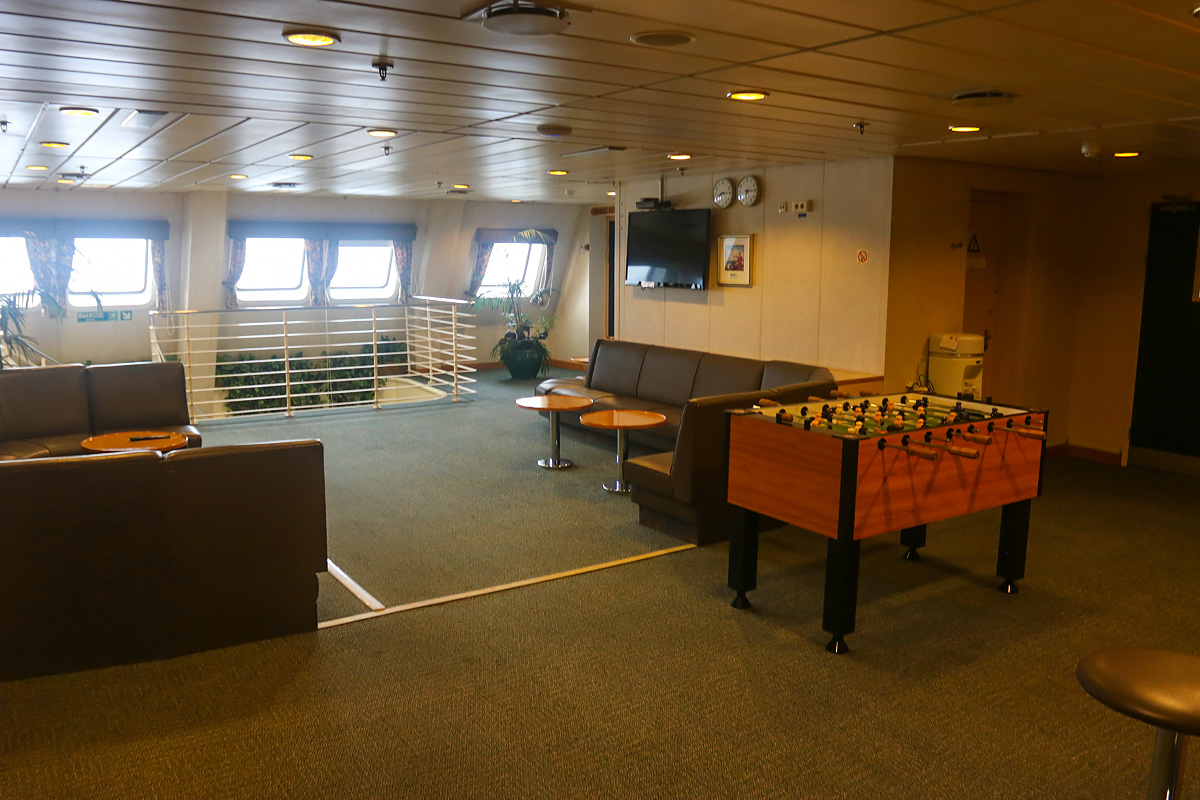
Command room.
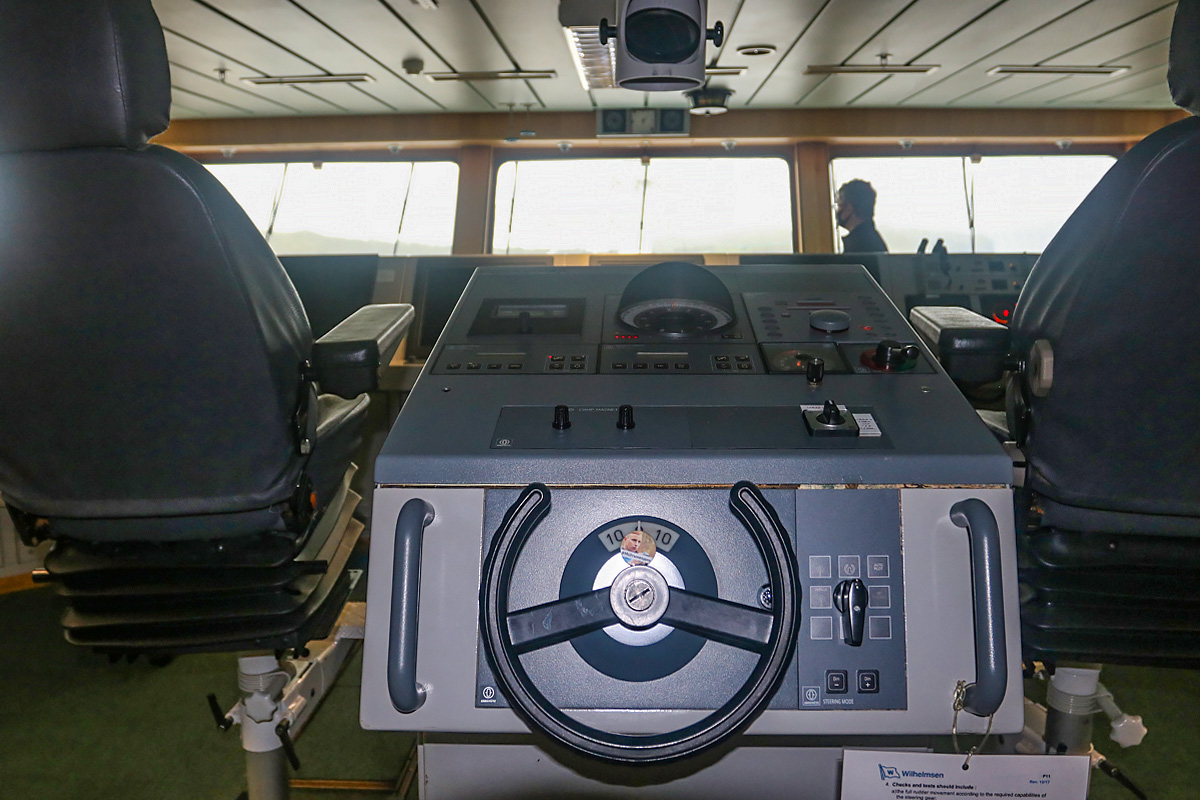
Important technological equipment for launch control.

The captain's seat resembled something from Star Trek.

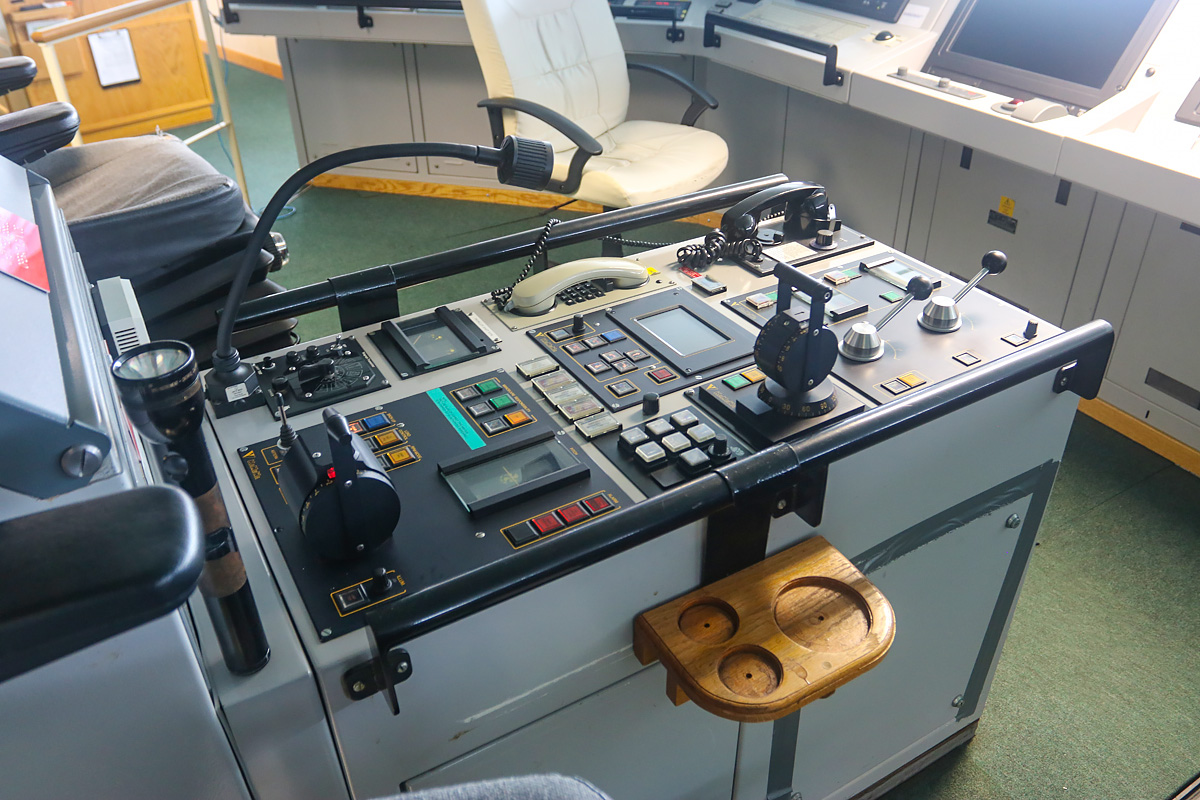
On the helicopter hangar, the logos of the satellites launched by Sea Launch are visible from the windows.
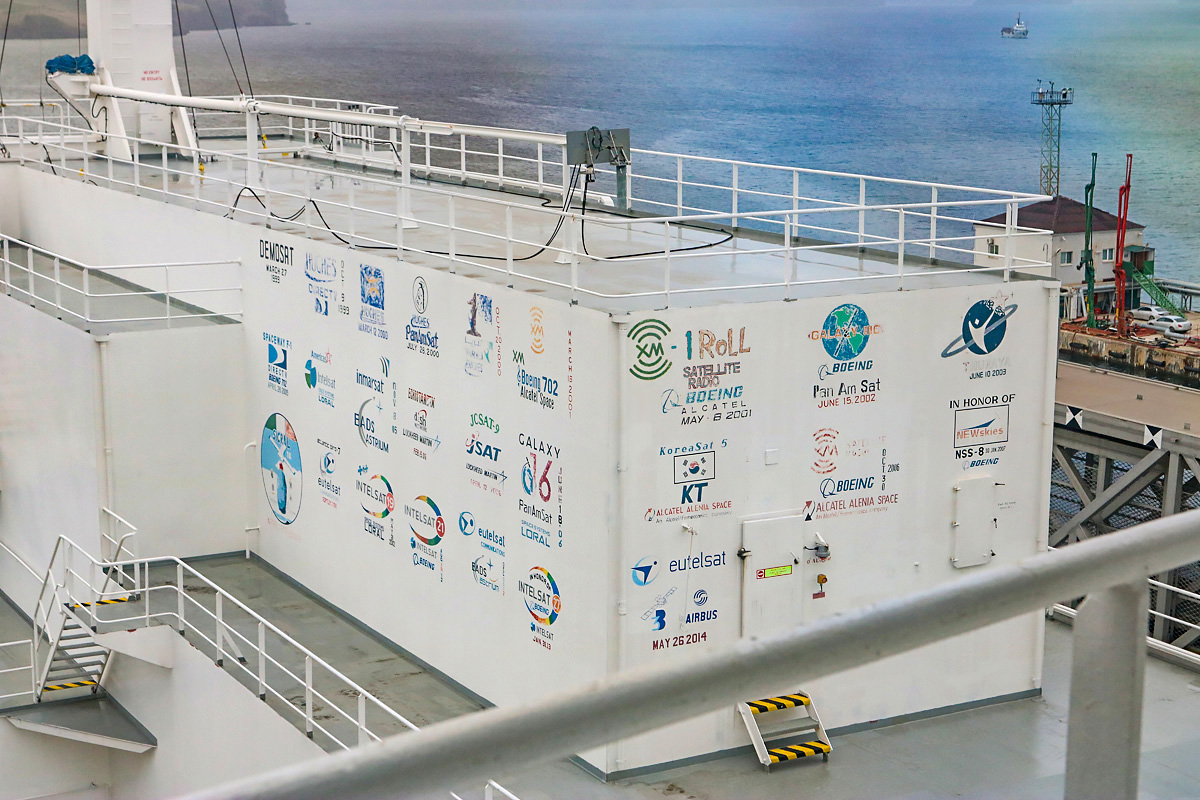
Assembly and test hold.

Now it is just a warehouse for equipment that was "evacuated" from the United States. For example, this container from the upper stage DM.

I never found a Phillips screwdriver for this screw.
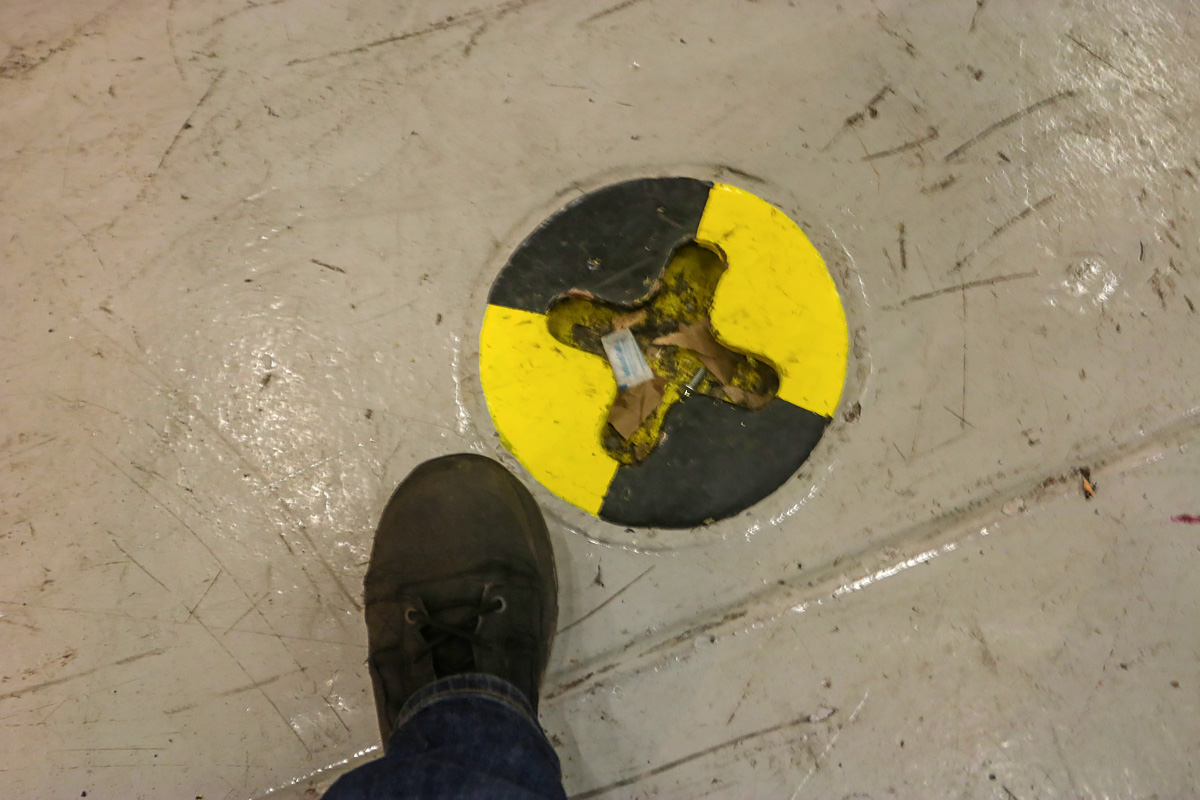
Although, in fact, these are fastenings for lashing the load.

The next visit is the Odyssey Launch Platform.
An unusual design under the control room is a device for reloading the rocket from the command vessel to the launch vessel.
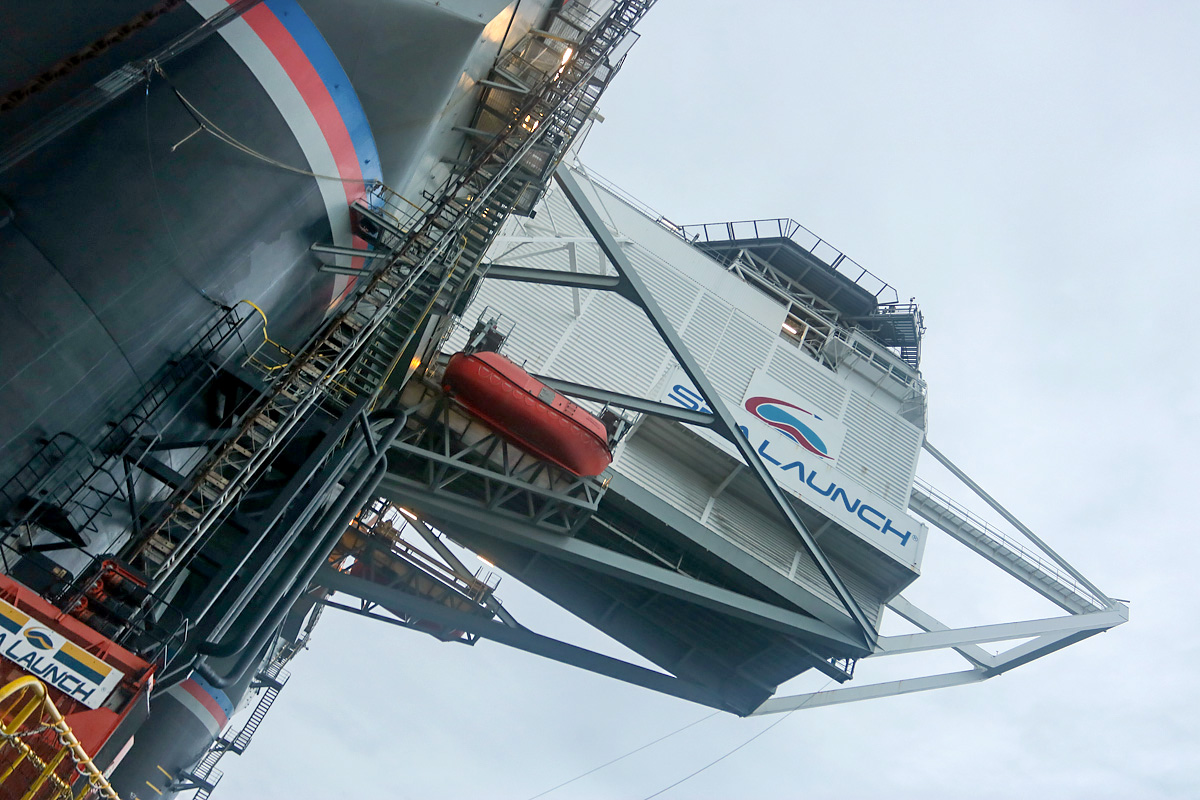
And here lies the answer to one of the questions regarding the effectiveness of the entire project: was it possible to make several launches in one exit to the ocean? The answer is no. The transfer of a rocket from one ship to another is possible only in the port, and even there they chose calm weather and morning time to avoid noticeable rolling.
After overloading, the rocket was fixed in a recumbent form on a lifting device, and so, in a closed hangar, transportation was carried out.
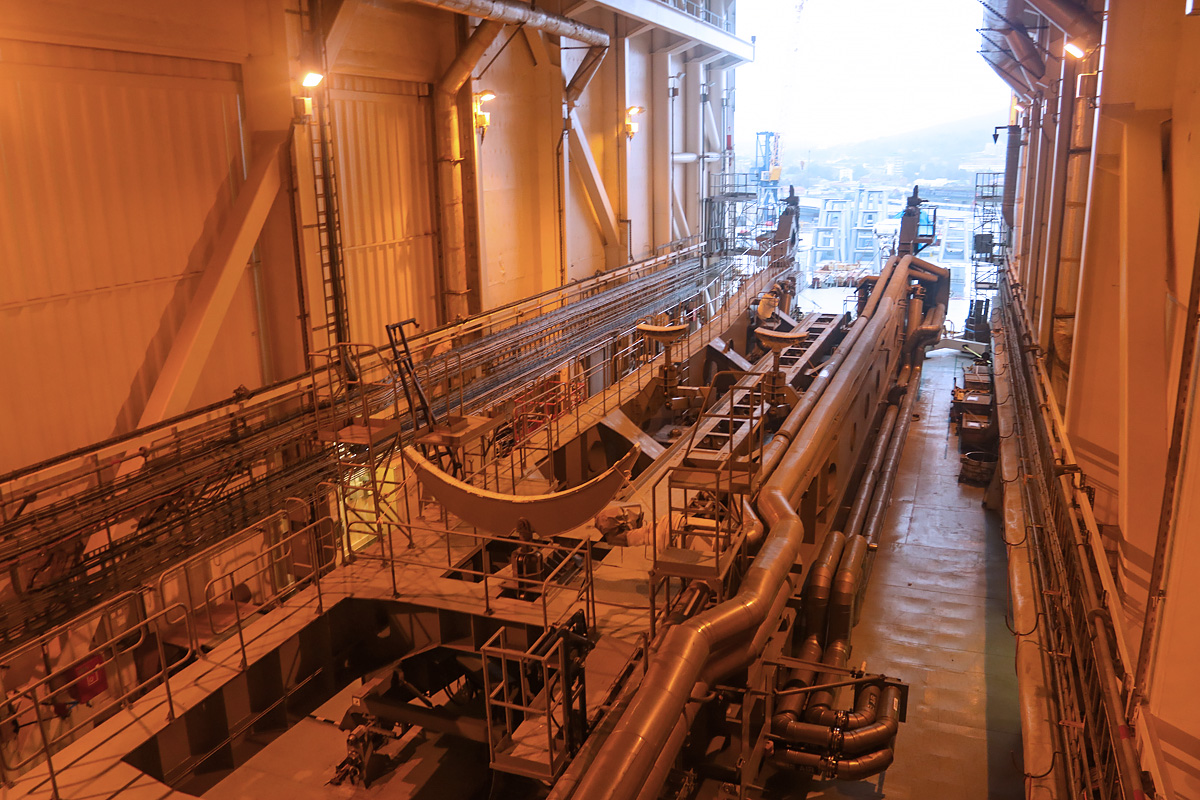
It is curious that a couple of years earlier I visited Atommashwhere this lift was made, and now they are producing nuclear reactor vessels. They still remember and proud of their contribution to astronautics.
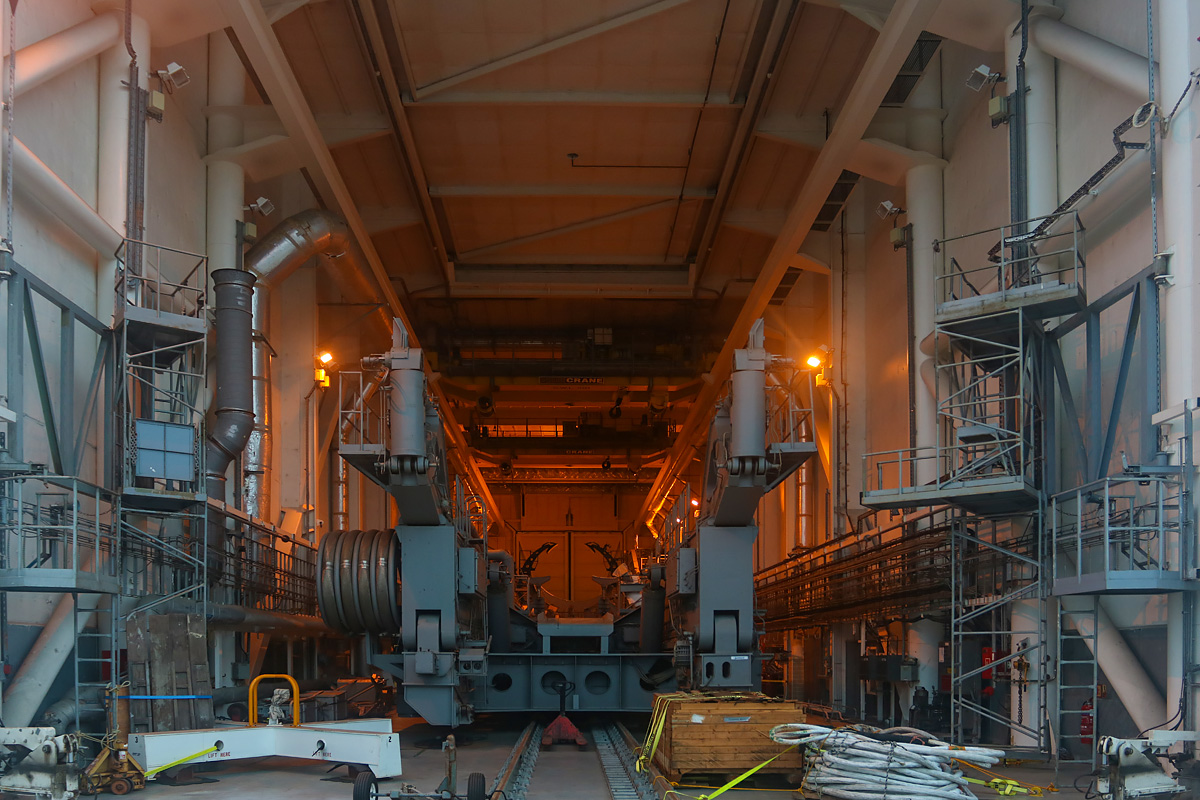
Finally, the apotheosis of the excursion is the starting table.
The gas outlet channel, which received the jets of all 36 missiles that were launched from here. The unusual "fangs" in the channel are the cooling system of the flame deflector and extinguishing acoustic waves. Fresh water is supplied through them, which reduces the load on the launch pad structure.

At the “bottom” of the gas outlet there is a flame baffle, which divided it in half, deflected the rocket jet at a right angle and did not give it the opportunity to hit the ocean water. Apparently, this was necessary in order not to disturb the surface of the water and to prevent the gas from the rocket jet from flying back into the engine nozzle.
This is how this part of the structure looks from the outside.
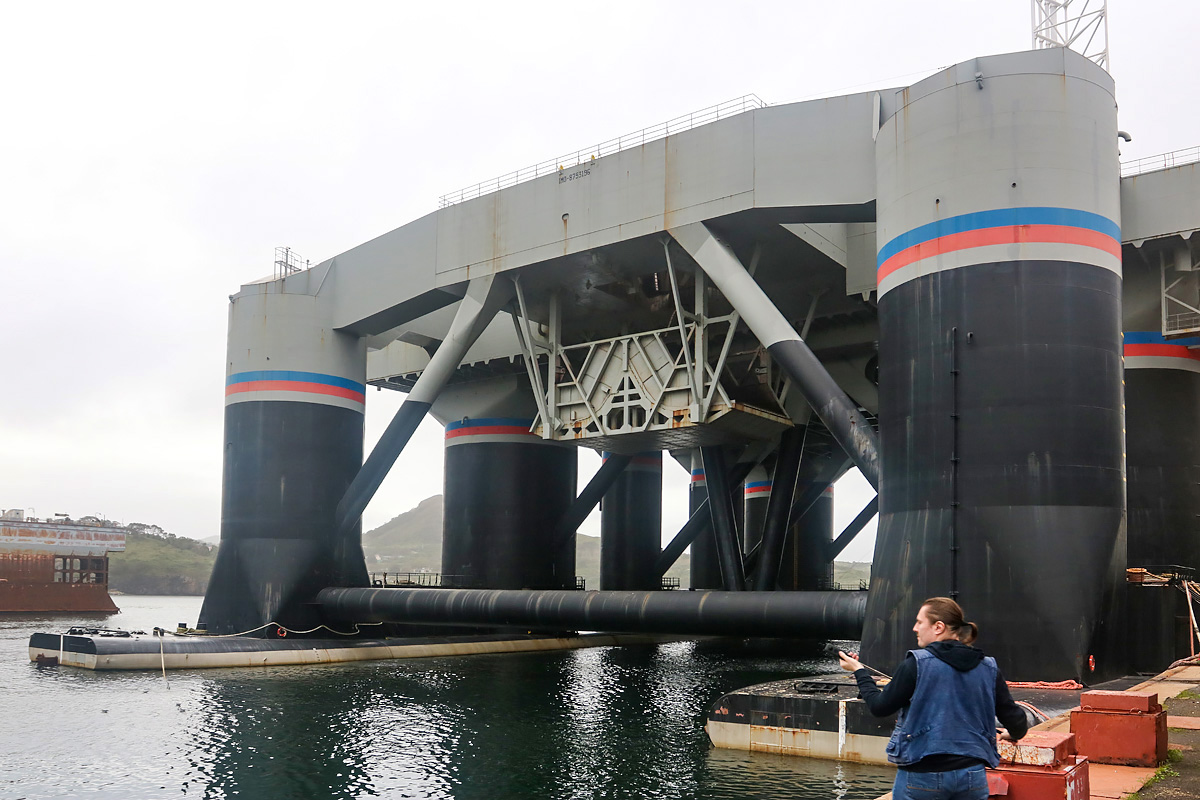
On the backgroundlozga
At the moment of turning on the rocket engine, one can see how giant jets of steam scatter to the sides from under the launch pad.

Nearby are liquid oxygen storage tanks. Usually they are protected from rocket gases by a small barrier.

Surprisingly, these tanks are not only not damaged by a normally launched rocket, but remained practically intact after the Zenith explosion.
Cable mast. (The A-pieces, located around the table, are the support for the ship in case it is dry docked).
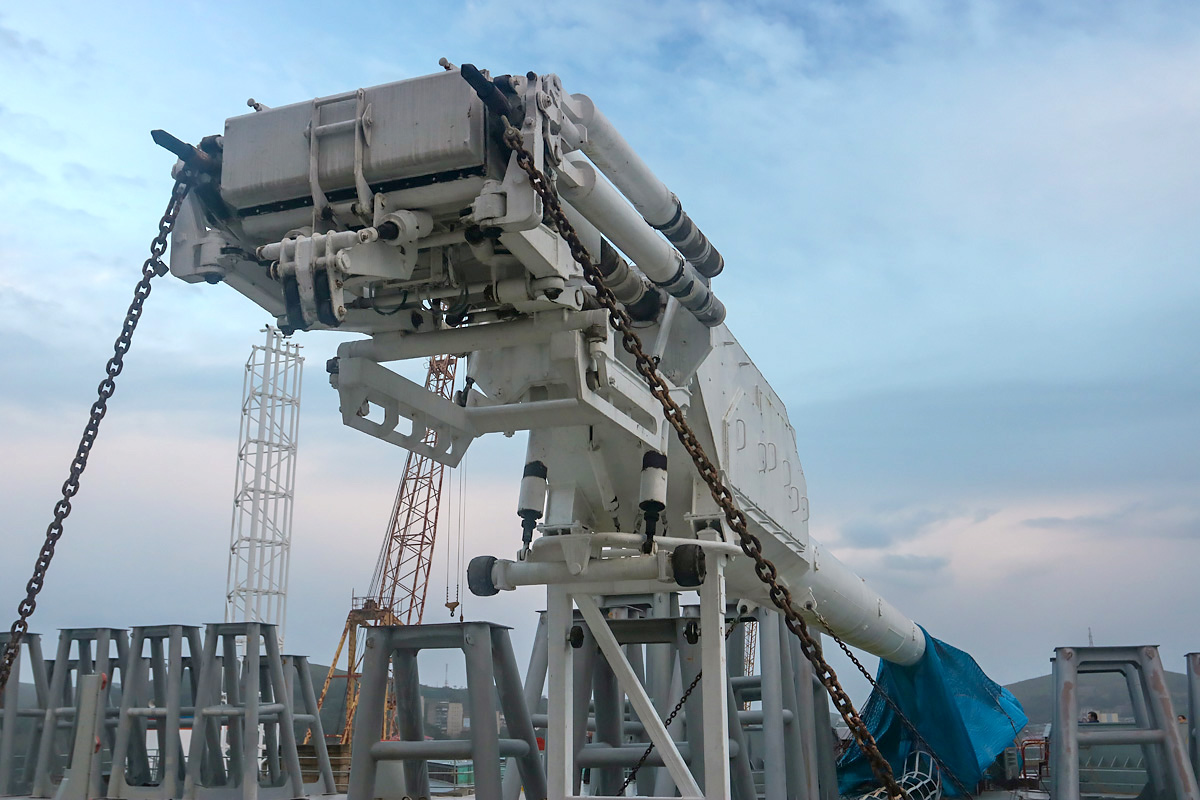
Finally, the answers to the most important questions:
Can the cosmodrome launch today if there is a rocket?
No, it cannot because of the electronics removed by the Americans and the Ukrainian launching systems.
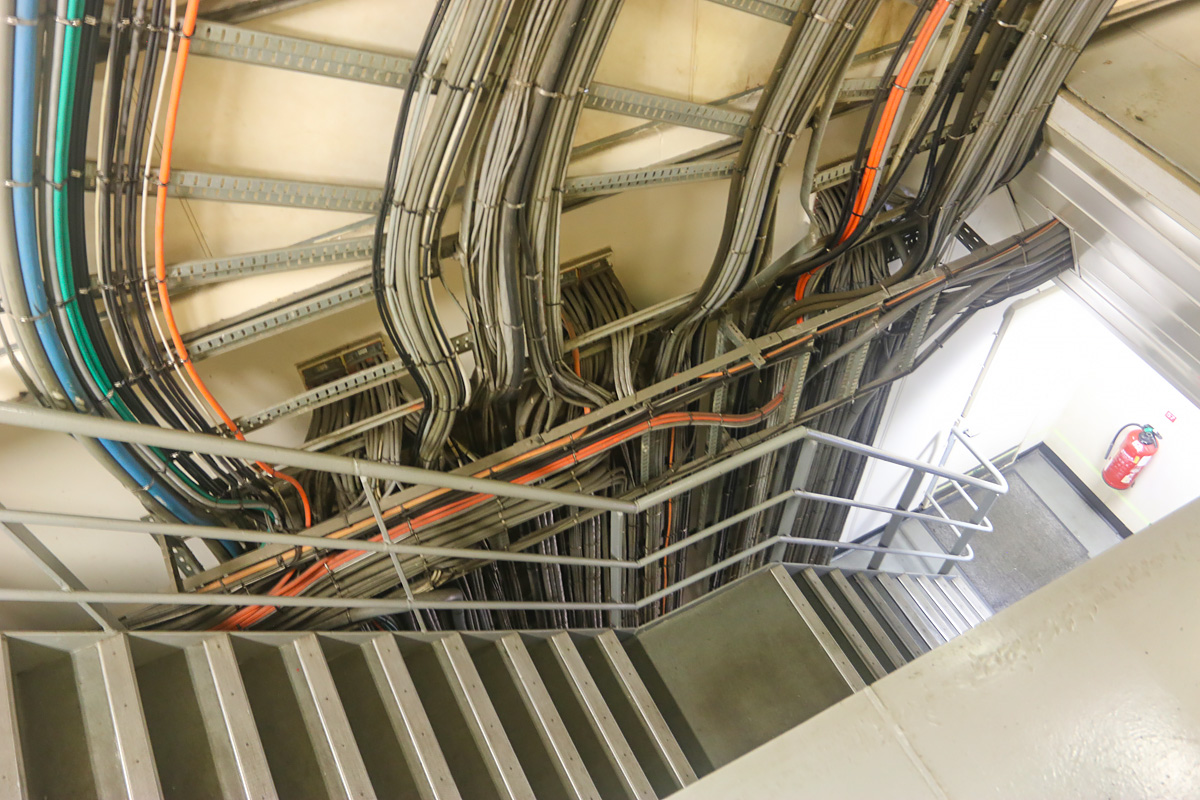
What electronics has been removed and needs to be replaced?
Radio communication systems between two ships. And these are not only radios for negotiations between crews. This is practically the entire command-telemetry system that transmits information between the MCC and the launch pad along with the rocket. There is such a system at every cosmodrome, but, as a rule, it is a cable network. There was a remote control at Sea Launch, and it is no longer there.
And that is not all. The second vital system is positioning, without which it is impossible to perfectly accurately place two giant ships side by side in the center of the ocean. Such positioning is necessary for the transfer of the crew from the launch vessel to the command vessel before launch.
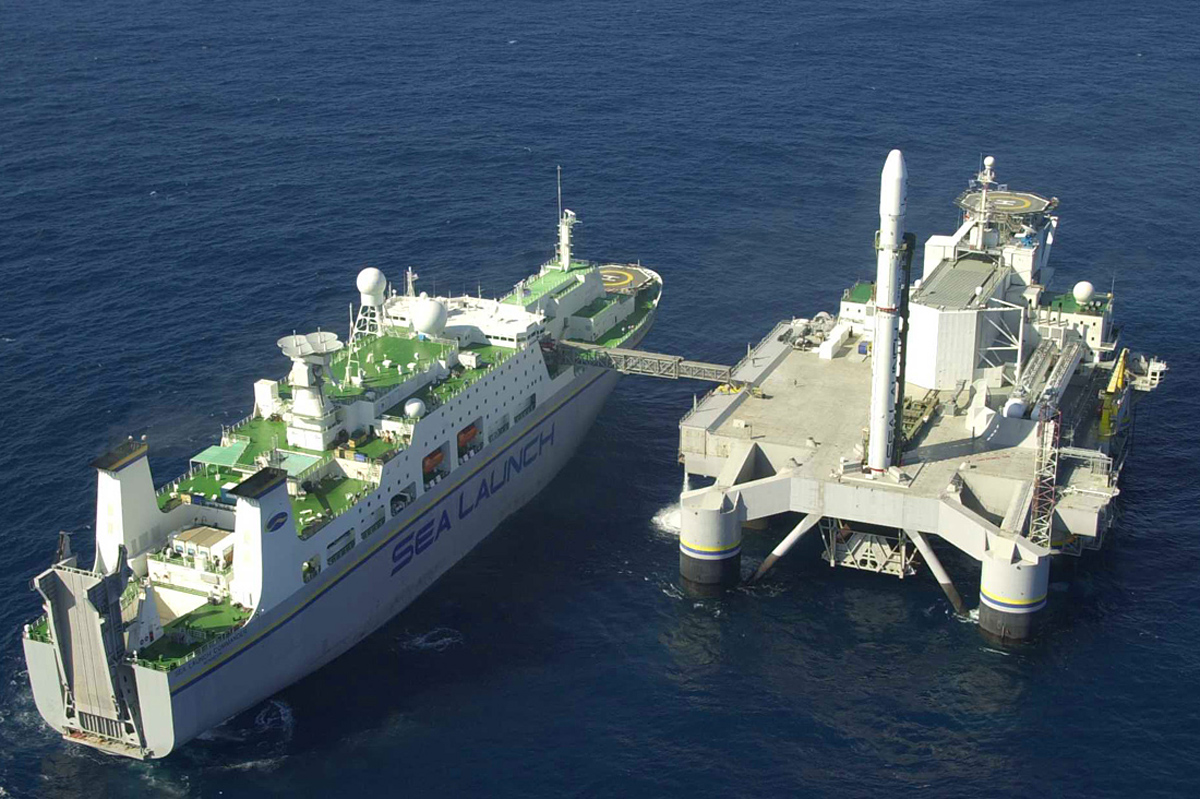
If, however, set the goal of reloading missiles on the high seas, then the task will become an order of magnitude more difficult, although it will significantly increase the efficiency of the cosmodrome.
Finally, the third part, which in any case would have to be changed, is the systems for preparing spacecraft for launch.
Is Slavyanka capable of providing Sea Launch in the operating mode of an active cosmodrome?
No, we need a new thermal power plant, and for it we need to draw gas to Slavyanka. Here we can talk about improving the standard of living in the village after the arrival of gas, but I thought that this task is a suitable application for Rosatom's floating nuclear power plant .
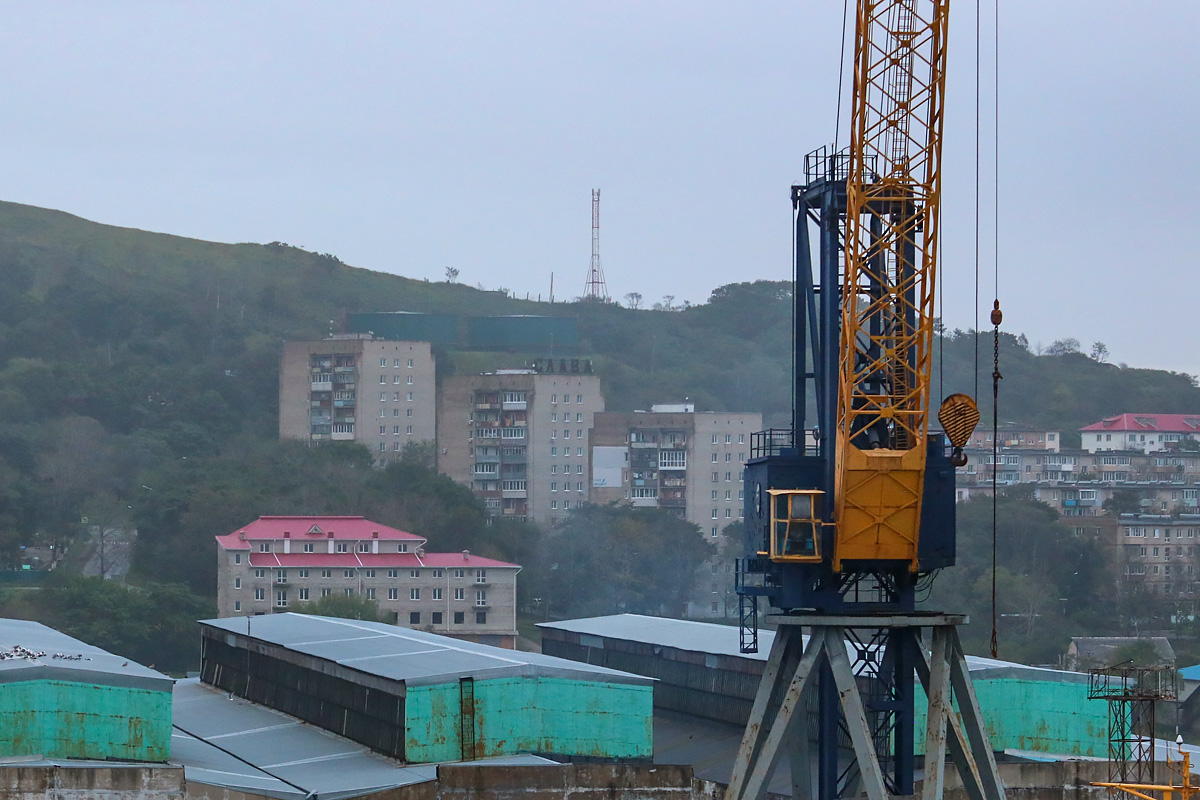
Can Sea Launch compete with SpaceX?
No, it cannot. Definitely. The current political and economic situation in the world puts an end to all hopes of making Russian space rockets profitable on the world market, from whatever cosmodrome, whatever rocket they launch. When SeaLaunch was American, there was still hope that it could be used to bypass the Pentagon's restrictions , but now it doesn't. Therefore, there is only a government order ahead, and rare orders from third countries that are not afraid of American sanctions.
Why then does Russia need a Sea Launch at all?
Yes, simple. Cool thing, it's a pity to cut it for scrap.
But seriously, this is first of all a good image project. Beautiful and romantic, albeit useless for the economy, like a city on Mars. For Roscosmos, it provides a number of indirect benefits - this is an additional convenient reason to switch to the new Soyuz-5 and Soyuz-6 missiles, and to save money on building a launch pad for them. And these rockets, in turn, are needed to give work to the Khimki Energomash , which held out for twenty yearsselling engines to Ukrainian “Zeniths” and American Atlas V, and is in danger of being completely out of work in a year or two. The current "workhorse" of Roskosmos "Soyuz-2" is an excellent rocket both aesthetically and technically, but the engines for it are produced by the Rostec enterprise, i.e. "Outside the contour", which takes part of the budget funds to the side of Roscosmos, this does not suit him. Also "Soyuz-5" and "Soyuz-6" are elements of a lunar rocket projected by Roskosmos, so if they fly, the conquest of the moon will become a little cheaper and more realistic if the state does find funds for this task .
Will Sea Launch and Russian cosmonautics in general live?
Yes, but at our expense, dear taxpayers. So, get rich, gentlemen, law-abiding citizens, get rich. Raise the GDP and space will be ours.
I would like to express my gratitude to the press service of Roscosmos for their help in preparing the photo report.